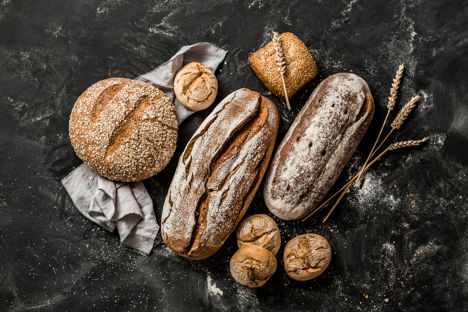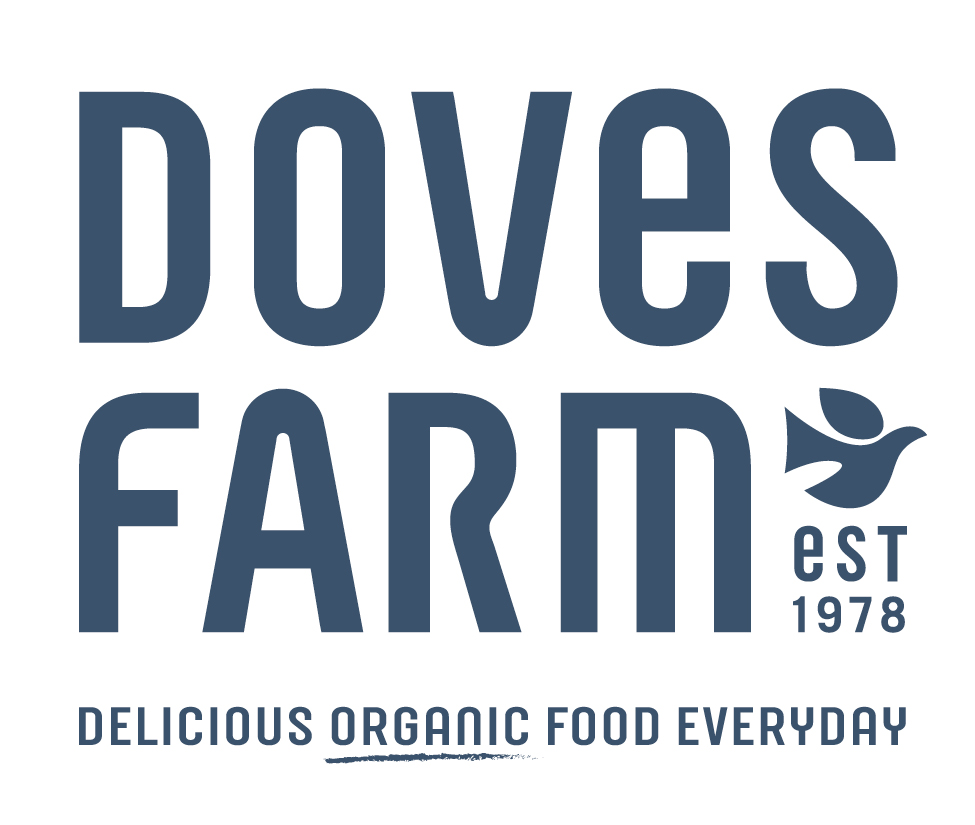
Breaking bread: a guide to ancient grains
Modern wheat may be responsible for the vast majority of flour in the UK, but bakers are starting to turn to the grains of yesteryear to create bread that’s a cut above the regular loaf. Learn more about them and why this heirloom grain revolution is showing no signs of stopping.
Breaking bread: a guide to ancient grains
Modern wheat may be responsible for the vast majority of flour in the UK, but bakers are starting to turn to the grains of yesteryear to create bread that’s a cut above the regular loaf. Learn more about them and why this heirloom grain revolution is showing no signs of stopping.
For such an unassuming plant, wheat is pretty fascinating. It’s been with us since the dawn of civilisation, initially being collected in the wild before being cultivated and domesticated thousands of years ago. As the world’s societies became more advanced, our knowledge of farming and wheat grew with it, and we started to cross-breed and hybridise different varieties of wheat grasses with one another to boost yields, improve flavour and make harvesting easier. Wheat went from being a wild grass to one of the most important crops in the world.
However, by the beginning of the twentieth century, global populations were rising so quickly that high yields and ease of harvest started to take priority over flavour. Modern wheat was created which, in combination with new nitrogen-based fertilisers, grew quickly, was better at resisting pests and disease and didn’t require much processing to be turned into flour. This modern grain soon became ubiquitous, as farmers knew they could rely on it to provide consistent results with minimal fuss, and it continues to be the most common form of wheat grown today.
However, from around the 1970s onwards, there has been a rapidly expanding movement to start growing and milling the varieties of wheat that came before the commoditised modern version. Fans of organic produce, the health-conscious and those who wanted interesting or different flavours in their flours started to rediscover ancient grains that had once been the norm until modern bread wheat muscled them out of the fields. In the past few years demand for these wheat varieties has exploded, and it’s common to see loaves made with the likes of spelt and rye in most British bakeries – something that was all but unheard of a few decades ago. But why do people seem to love these ancient grains so much, and what do they bring to the table when making bread? Learn about the origins of the six most popular varieties below and why you should try them out next time you feel the need to knead.
Rye
Rye bread is a common sight in British bakeries today, but that wasn’t always the case. Thought to have originated as a wild crop in Turkey (where evidence of the crop has been found in Neolithic excavations), it became a popular crop to grow throughout eastern and central Europe. Germany, Russia and Poland were the biggest producers of rye from the Middle Ages onwards, and it was a rare sight in the UK until around thirty years ago.
Today, rye breads have gained popularity as they’re often moister, longer-lasting and denser than loaves made with modern wheat. There’s the German pumpernickel, which is a dense brick of a loaf made with coarsely ground rye grains that has a sweet, malty flavour. You can also use rye to create a sourdough bread that sacrifices lightness for a more pronounced flavour and fuller texture. In Scandinavia, crispbreads (known as knäckebröd in Sweden) are made with rye flour, and because rye bread is high in fibre, low in gluten and has a lower glycemic index than regular white bread, it’s particularly popular with the health-conscious. Rye flour can be bought as either a white flour, which will result in a lighter coloured loaf with a less pronounced flavour, or as a dark (or wholemeal) flour, which will produce a nutty, slightly acidic loaf absolutely packed with nutrients. The flavour of the flour also matches well with fruits, making it a wonderful flour to use in fruit breads and sweet pastries.
Spelt
Spelt is one of the most popular ancient grains available today. Evidence of its cultivation dates back to 5000 BC in the Caucasus, and the Ancient Greeks loved it so much they believed it to be a gift from Demeter herself, the goddess of agriculture. By the Iron Age it was popular across central Europe, and there’s evidence of widespread spelt harvesting in the UK dating back to 500BC (the Romans had a particular fondness for it). It remained a popular choice for wheat farmers until the introduction of modern bread wheat in the twentieth century, which quickly replaced spelt as it provided higher yields and didn’t need to be husked. However, it’s had a revival in recent years thanks to artisanal bakers giving it the attention it deserves, and is now grown in the UK once again.
Spelt bread is favoured for its nutty flavour. It’s also lower in gluten than modern bread wheat, which makes it easier to digest, and is incredibly nutritious. Making spelt bread is easier too – it doesn’t require as much kneading as regular wheat flours because it has a more delicate gluten structure, but requires a little more water as it’s so absorbent. The dough itself is quite dense, which is why bakers sometimes add honey or butter to the mixture for extra pliability, and it’s a very good flour to use when making sourdough, as it proves quickly. The flavour of spelt also works really well in sweet contexts too, making it a popular addition to everything from muffins and cakes to pastry.
Emmer
As one of the first crops to ever be cultivated, emmer is a very important grain that’s only now just starting to be rediscovered. Originally from the Middle East, it’s part of the wheat family and sometimes referred to as farro – an Italian term that covers spelt, emmer and einkorn. While it is relatively rare to come across emmer in Europe, it’s remained popular in Italy, where it is sold as whole wheat berries, to be boiled boiled until soft and chewy for use in soups and stews. It also managed to sustain its status as an important crop in countries such as Morocco and Ethiopia, as it grows well in poor-quality soils.
When it comes to bread-making, emmer is much harder to turn into flour compared to regular wheat as it has a tough, thick husk surrounding the grains. This is why it was replaced by more modern varieties over the centuries, but in recent years it has been reintroduced to the UK, grown in small quantities for bakers looking to create loaves that are steeped in history and offer something different to the standard loaf. It acts in a similar way to Italian durum wheat, meaning it’s a popular choice for pasta-making too, and the deep, earthy, slightly sweet flavour combined with the reddish-brown colour it turns when baked makes emmer flour very interesting to work with.
Einkorn
Einkorn predates all other ancient grains and can be traced way back to 7500 BC (emmer is a hybrid of einkorn mixed with wild grass). This makes it the ‘original’ wheat variety, from which all other wheat species originate. It’s thought that it was first domesticated in Turkey, but humans were collecting the seeds dropped by wild einkorn plants tens of thousands of years beforehand. Einkorn crops spread throughout Europe up until around 2000 BC, when it began to be replaced by emmer, but small pockets of it remained in northern Europe. In more recent times, it became associated with the Provençal cuisine of France, where the local variety is known as petit épeautre and has PGI protection from the EU. While it’s usually boiled as a whole grain in France to be added to salads and soups, it is also turned into flour for bread-making, pasta production and even beer.
Making bread using einkorn flour can be a bit of a challenge – the dough is very sticky and if too much water is added it will become unusable. Get it right, however, and you’re rewarded with an incredible loaf that boasts a dark craggy crust and light, moist interior.
Khorasan (or Kamut)
This large wheat variety is thought to have been what the Ancient Egyptians made their bread with, and most likely originates from the Middle East (along with einkorn and emmer). It’s believed that it has always been quite a specialist crop to grow, never achieving the popularity of other ancient grains which would go on to be crossbred into modern bread wheat. However, this is what makes it such an interesting ingredient – the grains are particularly large, it grows especially well in dry, arid conditions and has a distinctly buttery flavour when used in baking. More recently, pasta producers have been using it as it is similar to Italy's durum wheat.
Khorasan was all but unheard of until the 1960s, when two farmers in Montana spotted the grains at a country fair and decided to see if it would grow in the local northwesterly climate. It did, and they decided to trademark their crop as Kamut, to stop other companies from creating modified or crossbred versions of the grain and selling it under the same name. Nowadays, practically all the khorasan wheat available in the world falls under the Kamut name, and while it still only accounts for a tiny percentage of wheat crops globally, it’s growing in popularity year after year. Breads made with khorasan have a subtle yellow colour, with a buttery, nutty flavour and even, slightly denser texture when compared to loaves made with regular wheat.
Buckwheat
Despite its name, buckwheat isn’t actually related to wheat at all. It’s actually a relative of the rhubarb plant, but produces seeds that are packed with complex carbohydrates which means it is often treated like a grain. Originally from the Yunnan region of China, it was first cultivated as far back as 6000 BC and used for all sorts of things – noodles, pancakes, groats (a sort of savoury porridge), pasta – and because it’s not a wheat variety, it’s completely gluten-free (though it’s only suitable for coeliacs and those avoiding gluten if certified gluten-free due to the risk of cross-contamination with wheat). Like other ancient grains, it was a popular crop throughout Europe (and was even introduced to the US) until modern bread wheat came along and took over the vast majority of production. While it still remained a specialist ingredient in places like France (where it is made into pancakes called galettes) and Japan (where it is made into noodles called soba),it was the health movements in the 1970s that started an increase in buckwheat production.
Loaves made with buckwheat flour are less common than pancakes and noodles, but they’re a popular choice for those intolerant or allergic to gluten. The crumb is dense and dark and the flavour has a slight bitter tang to it, which is why you’ll often find it mixed with other flours such as spelt or rice and creamy ingredients such as yoghurt or bananas.


